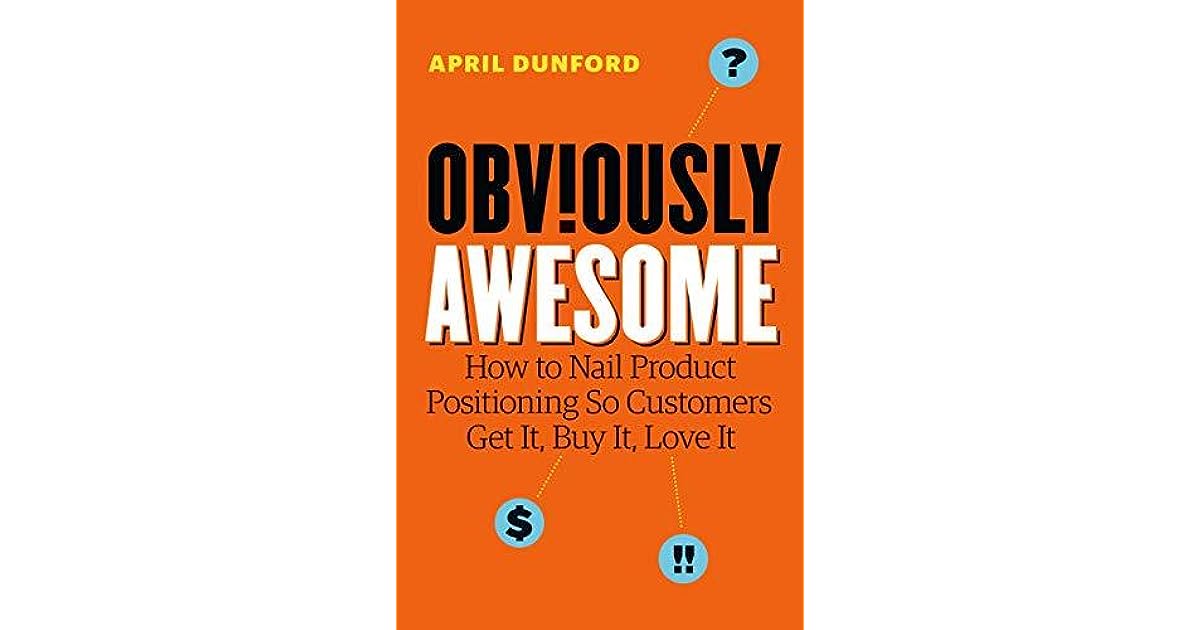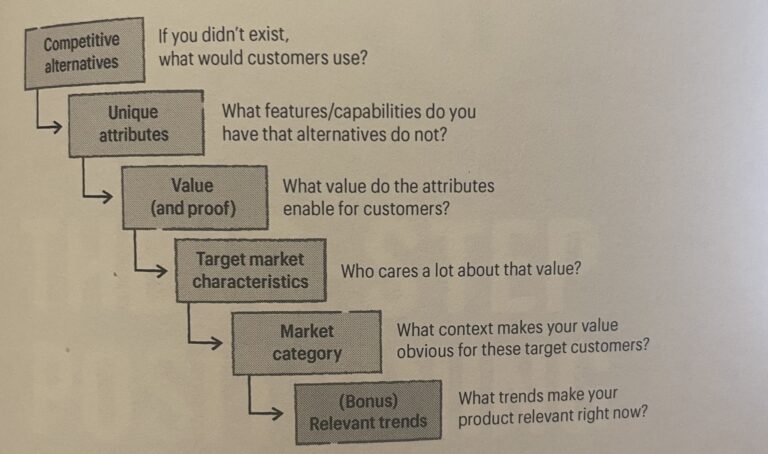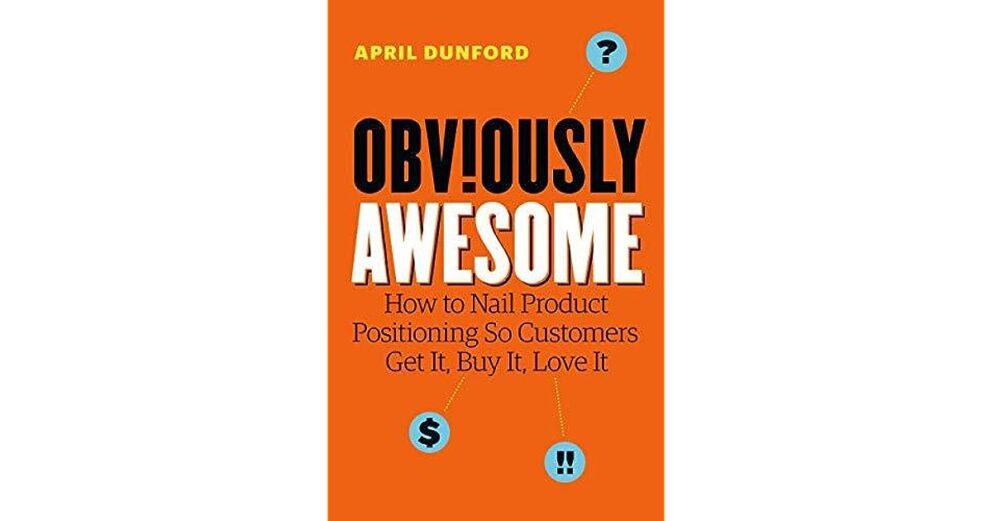Five Components of Effective Positioning: An “Obviously Awesome” Book Summary – Part 2

Summary
This is the second blog summary for April Dunford's book on positioning, "Obviously Awesome: How to Nail Product Positioning so Customers Get It, Buy It, Love It". This summary covers the five (plus one) components that make up a strong positioning statement.
By Sarah Threet, Marketing Consultant at Heinz Marketing
In this blog, I continue to summarize April Dunford’s book on positioning, “Obviously Awesome: How to Nail Product Positioning so Customers Get It, Buy It, Love It”. For part one of this book summary and learnings, please see my blog written here.
The Flaws of the Traditional Positioning Statement
If you have a marketing and/or business degree, more than likely, you are aware of the traditional positioning statement template. For those unfamiliar, the template recommended for drafting your positioning statement, is as follows:
“For [target buyers], [your offering] is a [market category], which provides [main benefits] unlike [competitor] which provides [competitor’s benefits].”
The purpose of this positioning statement template is to get us to think about how our product brings value to our target buyers, and how it may differentiate from substitutes in the market. It provides some of the important components to get us conceptualizing our product’s value to the market, but it is flawed in that it assumes we have all of the answers we need to create a powerful positioning statement.
- The template doesn’t provide any clues as to whether our positioning statement is effective or even accurate, and while it captures our current thinking, it is based off of assumptions we have about our target buyers that may not be true!
- The template reinforces a default way of thinking about our product and provides no guidance as to thinking outside of the box and reframing our product as something other than what may be most obvious (ex. Think about the “diet muffin” versus “paleo snack” in the previous blog summary).
- We rarely come back to the positioning statement template for our use in messaging. As a tool or source of reference, it is often only used once, and the positioning statement should be an integral part of marketing, messaging, and iteration.
- While there are a few different popular positioning statement templates, they are often difficult to remember in structure and parts.
The Five (Plus One) Components of Effective Positioning:
The positioning statement template above continues to be in practice and education because what it is good at is listing the important aspects needed to communicate our solution’s value. But since the statement itself is clunky and difficult to memorize, Dunford encourages us to focus on the components that really make the statement powerful:
- Competitive Alternatives: What our target audience would use/consume if our solution did not exist.
- Unique Attributes: The features and capabilities that our product/service has that alternatives do not.
- Value (and Proof): The benefits of those features to our target buyers and how they address their pain point(s).
- Target Market Characteristics: The attributes of a group of buyers (including their pain points) that make them care about the value of our solution.
- Market Category: The market we define our solution as fitting to better help illustrate the value to our target buyers.
- Relevant Trends (Bonus): Trends that our target audience may be aware of/interested in that may affect the way they view our solution, and what may help or hinder our solution’s relevancy.
Let’s discuss further…
Competitive Alternatives
Dunford reminds us that there are frequently many alternatives to our solution that aren’t other products/competitors per se, but rather tools that are more easily at their disposal: such as hiring an intern or doing budgeting in a spreadsheet. In B2B, the competitive alternative may even be budgetary and strategic priorities within the company.
Often times, our target buyers are not aware of all potential solutions to their pain point (harder even is if they’re not aware of their pain point or the root of its cause). It’s also unlikely that they’ve heard of us, our competitors, or what, as Dunford wrote, “is state of the art” about our solution, because they have no basis for comparison.
It’s important that we know what our target buyers compare our solution to so that we know how to re-educate them and reframe our solution.
Unique Attributes
Unique attributes are the capabilities and features that make your solution unique by comparison to the alternatives; they’re also called “differentiators”. These could be technical features, our delivery model, our business model, and/or expertise. For Heinz Marketing, as consultants, we position ourselves by our combined expertise and experience.
Since there are likely several unique attributes to our solution, Dunford reminds us that no matter what makes us different, when we are targeting, we need to be mindful of THIS unique buyer’s comparative solution, so that we are certain to communicate the most relevant differentiator.
Value (and Proof)
What makes our solution unique by comparison to the alternatives needs to have demonstratable value. Qualitative data only gets us so far (although good reviews are always a benefit); we need irrefutable data that has been collected through our own solution’s performance and preferably backing from third parties as well.
Value should always be as fact-based as possible.
Target Market Characteristics
Our solution may likely be one that brings value to many people, however, we need to be strategic about our marketing efforts. Our positioning needs to clearly identify who in our total addressable market would get the MOST value out of our solution; that is who we focus on targeting. These are the kind of buyers who will buy quickly, without discount, and will champion our solution.
Think about all the solution’s unique characteristics: is there someone who meets at the intersection of where all those characteristics overlap? Get as specific as possible when addressing who to target as an ideal customer.
Dunford’s example is of IBM’s database. They were targeting any company with a large amount of data, but it wasn’t just that IBM’s database could store a large amount of data, but that it could also process the data quickly. They began thinking about who would want data processed quickly and why, and that’s when they began targeting banks, because of their need for security.
Market Category
The market category is a frame of reference for your target audience; categories are shorthand for how customers may group solutions together. With so many solutions in market, it is very overwhelming for the average buyer to shift through so many options.
Categorization aids in decision simplification, but we need to be careful about how we label our solution, because framing any such way presents a bevy of assumptions. These assumptions include how our solution functions, pricing, our purpose, etc. If we choose a market category wisely, then the categorization already aids in framing, and we don’t need to educate. Otherwise, most of our marketing efforts may be spent battling incorrect assumptions.
Sometimes we end up in the wrong category because who we built the solution for may not actually be the best audience, and that’s why repositioning and taking an iterative approach to your positioning statement is important.
Relevant Trends (Bonus)
When used carefully, leveraging relevant trends can provide additional context to our target buyers why our solution is valuable – and why it’s something they should pay attention to right now. Trends are important because customers want to be in the know about the newest, hottest, most disruptive technologies and approaches. As marketers, we want to first categorize our solution and THEN look at relevant trends in our industry.
I love that Dunford included this component in her book and I think it’s often overlooked. We get so engrossed in our product, service, solution, brand that we become clouded by bias and we pigeonhole ourselves. The “diet muffin” versus “paleo snack” is an example that will stick with me; yes, the muffin is appropriate for those on a diet, but the relevancy is that people don’t want to think of themselves as being on a “diet”. “Diet” has a lot of negative baggage; it has less association with “health” and more association with unhealthy undereating.

10 Step Positioning Process
In my next blog, I’ll summarize how Dunford recommends putting these 5+ components together in her 10 Step Positioning Process. In the meantime, you can begin to think more about your solution’s positioning by creating a simple positioning card and brainstorming bullet points under each component. There may be pain points that your solution addresses that you haven’t yet thought of, and those pain points may belong to target buyers you haven’t conceived of yet either.





